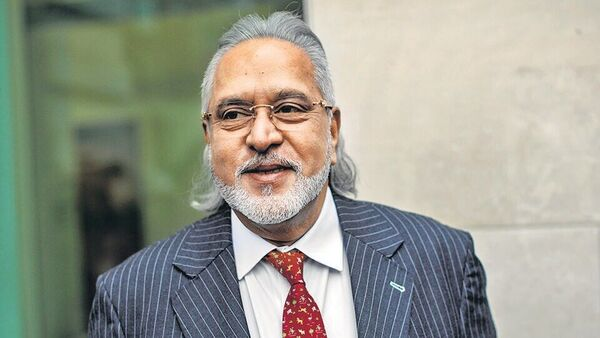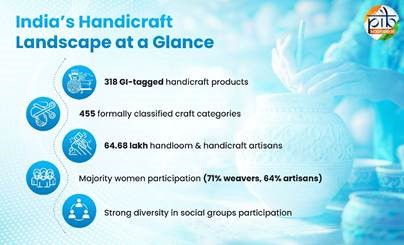Description
_SCHEME_OF_THE_WTO.png)
Copyright infringement not intended
Context: According to a report by the LDC Group at the World Trade Organisation (WTO), over 85% of the approximately 11,000 products given at zero tariffs by India to least developed countries (LDCs) under the WTO's duty-free quota-free (DFQF) system remain unutilized.
Details
Background
- The decision to grant duty-free quota-free (DFQF) access to LDCs was made at the 2005 WTO Hong Kong Ministerial Meeting. The decision requires all members, both developed and developing, to declare that they are in a position to give preferential market access for all products originating in all LDCs.
- In 2008, India became the first developing country to extend this assistance to LDCs, providing market access to 85% of India's total tariff lines to better integrate LDCs into the global trade system and boost their trading chances.
- The scheme was enhanced in 2014 to provide LDCs with privileged market access on approximately 98.2% of India's tariff lines.
- India provides 11,506 preferential tariff lines to LDCs, 10, 991 of which are duty-free. There are 1,129 duty-free tariff lines for agricultural commodities and 9,862 for non-agricultural goods.
|
Least developed countries (LDCs)
● The least developed countries (LDCs) are low-income countries that face severe structural impediments to sustainable development. They are highly vulnerable to economic and environmental shocks and have low levels of human assets.
● The United Nations (UN) currently classifies 46 countries as LDCs based on three criteria: income per capita, human assets index and economic vulnerability index.
● The LDCs represent the poorest and weakest segment of the international community and require special attention from the international community to overcome their challenges and achieve their development goals.
|
Recent updates
- According to the recent WTO data for 2020, 85% of tariff lines have a 0% utilisation rate compared to 64% for China, and just 8% have an utilisation rate of more than 95% compared to 17% for China.
- There is a significant variation among the beneficiary LDCs, and the two countries with the highest amount of eligible imports at the same time (Guinea and Bangladesh) have very low utilisation rates (8% for Guinea and 0% for Bangladesh).
- Benin has the greatest utilisation rate of any beneficiary country, at 98%, according to the research.
- According to the report, significant amounts of LDC exports are entering India through non-preferential (most favoured nation) tariff routes, despite being covered under the Indian preference programme.
.jpeg)
Duty-free Quota Free (DFQF) Scheme
About
- The duty-free quota-free (DFQF) scheme of the World Trade Organisation (WTO) is a trade preference program that allows least developed countries (LDCs) to export their products to developed and developing countries without paying any tariffs or quotas.
- The scheme aims to enhance the market access and competitiveness of LDCs and to support their economic development and poverty reduction.
|
Developed and Developing Countries
● The term developed country refers to a country that has a high level of industrialization and economic growth, as well as a high standard of living and human development. Developed countries are also known as advanced countries or first-world countries, as they are self-sufficient nations. Some examples of developed countries are the United States, Canada, Japan, Germany, and Australia.
● The term developing country refers to a country that has a low or medium level of industrialization and economic growth, as well as a low or medium standard of living and human development. Developing countries are also known as less developed countries or third-world countries, as they depend on other countries for aid and assistance. Some examples of developing countries are India, China, Brazil, Nigeria, and Bangladesh.
● There is no clear-cut definition or criteria for classifying a country as developed or developing, as different sources may use different indicators and methods. However, some common factors that are often considered are gross national income per capita, human development index, literacy rate, life expectancy, infant mortality rate, poverty rate, and environmental quality. Generally speaking, developed countries have higher values for these factors than developing countries.
|
India and DFQF scheme
- India is one of the countries that have offered DFQF access to LDCs under the WTO framework. India has granted DFQF access to 98% of its tariff lines, covering more than 11,500 products, for 49 LDCs since 2008.
- A recent report by the LDC Group at the WTO reveals that only about 15 per cent of these products have been utilised by the LDCs, leaving 85% of the potential benefits untapped.
The report identifies several factors that limit the utilisation of the DFQF scheme by the LDCs. These include:
Lack of product diversification and value addition
- The lack of product diversification and value addition in the LDCs limits their export capacity and competitiveness. For example, the LDCs mainly export raw materials and low-value-added products, such as cotton, coffee, oilseeds, and minerals, while India imports more processed and high-value-added products, such as textiles, garments, leather goods, and chemicals.
High non-tariff barriers and standards
- The high non-tariff barriers and standards imposed by India on some products, such as textiles, garments, leather goods, and agricultural products, increase the cost and complexity of exporting to India. For example, India requires sanitary and phytosanitary certificates, conformity assessment certificates, and rules of origin certificates for some products, which are difficult and costly for LDCs to obtain.
Low awareness and information
- The low awareness and information among the LDC exporters and traders about the DFQF scheme and its procedures and requirements. For example, many LDC exporters and traders are not aware of the list of products that are eligible for DFQF access, the tariff codes that need to be used, the documentation that needs to be submitted, and the benefits that can be availed under the scheme.
Inadequate trade facilitation and infrastructure
- The inadequate trade facilitation and infrastructure in the LDCs hamper their connectivity and logistics efficiency. For example, LDCs face challenges such as poor road and rail networks, inefficient customs procedures, high transport costs, and limited access to ports and airports.
The report recommends some measures to improve the utilisation of the DFQF scheme by the LDCs. These include:
Enhancing the productive capacity and diversification
- Enhancing the productive capacity and diversification of the LDCs through technical assistance, investment promotion, and regional integration. For example, India can provide support to the LDCs in developing their industrial sectors, upgrading their technology and skills, promoting their value chains and clusters, and facilitating their integration into regional markets.
Reducing or eliminating the non-tariff barriers
- Reducing or eliminating the non-tariff barriers and standards imposed by India on some products, especially those that are of export interest to the LDCs. For example, India can simplify or harmonize its regulations and standards with international norms or with those of other trading partners, provide technical assistance or capacity building to help the LDCs comply with them or grant exemptions or waivers for some products or categories of exporters.
Increasing the awareness
- Increasing the awareness and information dissemination among the LDC exporters and traders about the DFQF scheme and its procedures and requirements. For example, India can organize workshops or seminars for the LDC exporters and traders in collaboration with local trade associations or chambers of commerce, publish brochures or manuals on how to use the DFQF scheme effectively or create a dedicated website or portal for providing updated information on the scheme.
Improving the trade facilitation and infrastructure
- Improving the trade facilitation and infrastructure in the LDCs through cooperation and support from India and other development partners. For example, India can assist the LDCs in improving their road and rail networks, streamlining their customs procedures, reducing their transport costs, and expanding their access to ports and airports.

Conclusion
- The report concludes that the DFQF scheme is a valuable instrument for promoting trade between India and the LDCs, but it needs to be complemented by other measures to address the supply-side constraints and market access barriers faced by the LDCs. The report urges India and the LDCs to work together to enhance the effectiveness and impact of the DFQF scheme for their mutual benefit.
Must Read Articles:
Free Trade Agreement: https://www.iasgyan.in/daily-current-affairs/free-trade-agreement-48
World Trade Organization: https://www.iasgyan.in/daily-current-affairs/wto
|
PRACTICE QUESTION
Q. The World Trade Organization (WTO) has recently released a report that flags the poor utilization of India's duty-free tariff preference (DFTP) scheme for least developed countries (LDCs). What are the reasons for this low uptake of the scheme? How does it affect India's trade relations with LDCs and its role as a development partner? What are the possible ways to improve the effectiveness and impact of the scheme?
|
https://www.business-standard.com/economy/news/wto-highlights-poor-utilisation-of-india-s-preferential-scheme-for-ldcs-123060200896_1.html




_SCHEME_OF_THE_WTO.png)
_SCHEME_OF_THE_WTO.png)






